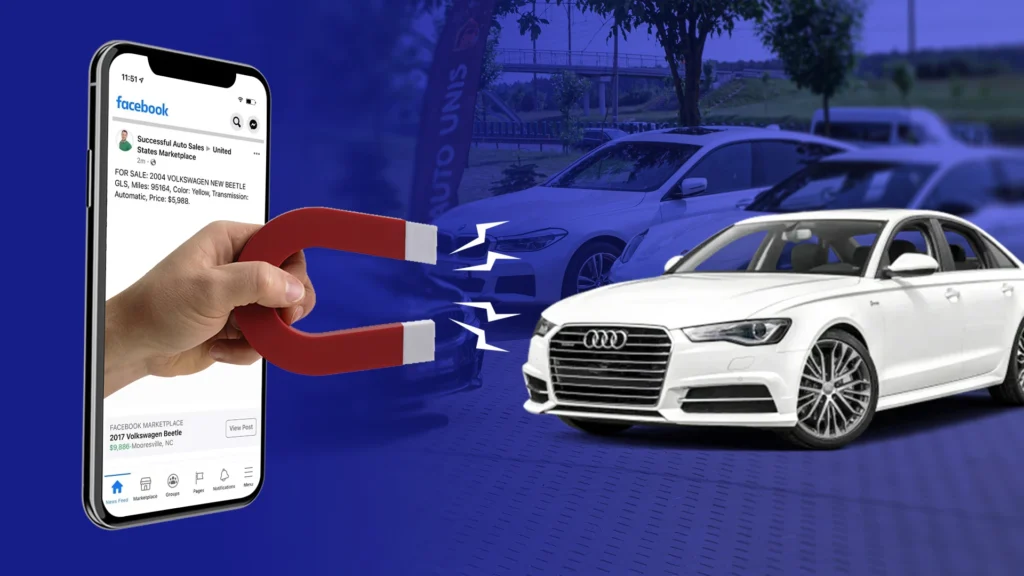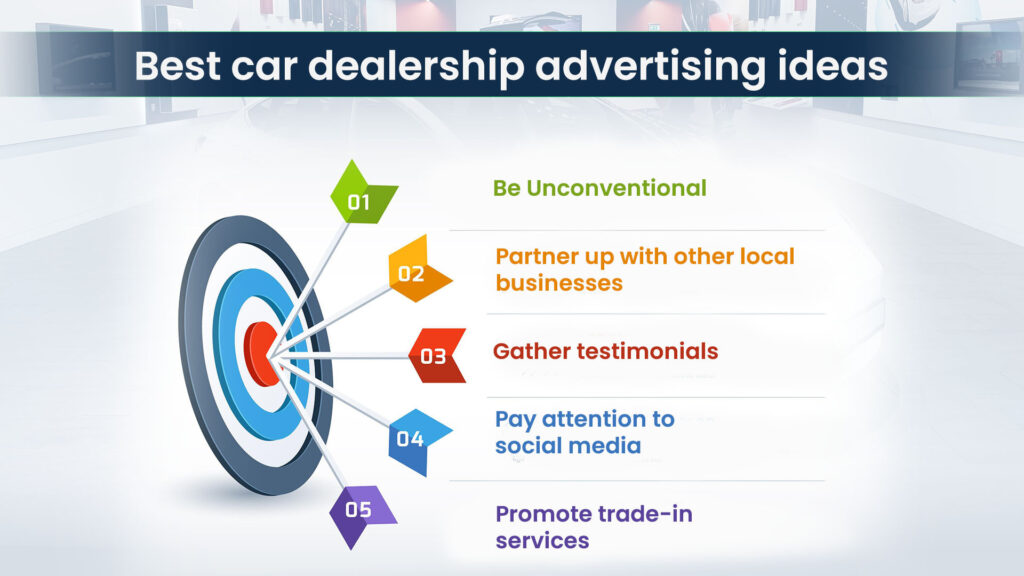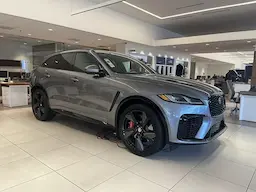It wasn’t that long ago when buyers spent whole afternoons going from dealership to dealership just to get the best deal on a car. They often relied on the salesperson’s word to find out about a vehicle. However, things have changed. Dealerships are now attracting potential buyers through appealing online ads. Therefore, this is the reason why you must research well about utomotive dealership advertising. Shoppers now do all their research from home before even stepping into a dealership. Modern car buyers spend around 59% of their time on online research. If you are just getting started in the digital world or have been considering outsourcing the task to a reliable car dealership advertising agency, digital dealership ads could solve your lead generation and marketing problems.
What is Car Dealership Advertising?
You might have seen dealers who advertise unusually low prices, low or no up-front payments, low- or no-interest loans, or low monthly payments. Other dealers promise high trade-in allowances, discounts, or low-cost add-ons, like service contracts. But the question arises here, what are these and why? Car dealership advertising refers to the marketing and promotional efforts undertaken by an automotive dealership to attract potential buyers. Further, it aims to increase brand visibility, generate automotive leads, and ultimately drive sales by effectively communicating.

It helps dealerships connect with prospective car buyers, both near-market customers who may purchase a car in 3-6 months and in-market customers who will purchase a vehicle in less than 3 months. The target audience of car dealer ads areconsumers who are actively searching for a car to purchase. They are in the market to buy a car and frequently visit automotive-related locations like dealerships or online sites to review and compare prices.

Why Invest in Car Dealership Advertising?
Investing in advertising enables car dealerships to:
- Increase brand visibility, making their dealership the top choice over competitors.
- Attract potential buyers, encouraging them to browse inventory, submit lead forms, and ultimately drive sales.
- Strengthen customer loyalty in specific regions through targeted campaigns.
According to the National Automobile Dealers Association (NADA), franchised dealerships in the U.S. spent $4.28 billion on advertising in 2023, with investment steadily rising since 2020.

Challenges of Car Dealership Advertising
The world of car sales thrives on capturing customer attention, but for dealerships, translating that attention into sales isn’t always a smooth ride. Car dealership advertising faces a unique set of challenges. Let’s explore the hurdles car dealerships face in crafting effective advertisements and discover how they can navigate this complex advertising process:
Top Challenges Faced In Paid Advertising
1) Challenges in Ad Personalization: It’s often a tough task to make ads feel personal to customers. We want to show prices, promotions, and exclusive offers into ads but we also need to make sure those ads are still relevant to what the customer wants.
2) Real-Time Pricing Adjustments: The complexity of altering pricing elements dynamically within advertisements. imagine trying to change the prices in your ads as fast as they change in the store. It’s not as easy as it sounds. We need to make sure the numbers in our ads are always up to date.
3) Alignment of Ads with Landing Pages: Hard to ensure that ads direct users to landing pages that are contextually relevant. Think of it like this: You see an ad for a cool new product, but when you click on it, you end up on a page that doesn’t even mention that product. That’s a problem we’re trying to fix—making sure the ads and the pages they lead make sense together.
4) Managing Ad Performance: Dealing with an overrun of underperforming high and mid-funnel campaigns. Sometimes, we have too many ads that don’t bring in the customers we want. They’re like doors that lots of people walk by but never go through. We’re working on making our ads more effective so that more people come in.
Top Challenges Faced in Advertising
1) Supply Chain Delays: Like many industries, the automotive sector is dealing with supply chain disruptions. Delays in obtaining new and used vehicles, vehicle parts, and value-added products can lead to lost opportunities, excess inventory, lower profit margins, and reduced customer satisfaction. Effective inventory management is crucial to mitigate these challenges.
2) Evolving Customer Needs: While digital options are growing, customers still value in-person experiences. Dealerships need to continually improve their parts-and-service departments to boost revenue. Implementing automotive service scheduling software and production efficiency platforms can help streamline workflows and provide efficient service to customers.
3) Changing Sales Strategies: Traditional high-pressure sales tactics are becoming less effective. Customers now seek consultative, personalized experiences. Dealerships can adapt by adopting a customer-centric approach and using technology to enhance the sales process. Expanding into parts-and-service departments can also provide a one-stop-shop experience for customers.
4) Preference for Digital Communication: Customers increasingly prefer digital communication channels such as text and email. Effective two-way communication between dealerships and customers can improve the in-shop experience. Production efficiency platforms can facilitate direct communication, leading to higher customer satisfaction and increased revenue.
5) Inefficient Dealership Processes: Time is of the essence in the automotive industry, and inefficiencies can reduce profit margins. Common reasons for inefficiency include time-consuming reporting processes, outdated software, fragmented data storage, and communication bottlenecks. Best advertising for car dealerships needs to improve dealership management system and address these issues to maximize productivity and profitability.
To overcome these challenges, vehicle advertising should invest in technology solutions, embrace digital marketing strategies, optimize their supply chain management, prioritize customer-centric approaches, and streamline their internal processes. Adapting to the evolving automotive landscape is crucial for long-term success in the industry.
How Do You Build a Car Advertising Strategy?
For dealership brands serving hundreds of locations, the significance of strategic advertising cannot be overstated. Strong digital marketing for automotive dealers and Car dealership advertising strategies ensure that you can customize the advertising campaigns according to each location’s demographics and requirements, guaranteeing success. The ways to build a robust car advertising strategy are listed below:
1) Understand Your Customer
Effective campaigns begin with a deep understanding of your audience. Use first-party data to identify your target market’s preferences, pain points, and reasons for choosing your dealership. Gather insights from customer surveys, reviews, and social media to inform your strategy.
2) Segment Your Audience for Targeted Campaigns
Segment your audience based on demographics, buying habits, and preferences. Avoid treating all car buyers as a single group. Tailor messages and choose appropriate platforms for each segment, whether they prefer online shopping or a hybrid approach, to boost conversions.

3) Highlight Your Dealership’s Unique Selling Points (USPs)
Identify what makes your dealership stand out—whether it’s exceptional service, flexible financing, a vast inventory, or competitive discounts. Emphasizing these USPs in your advertising campaign will make your dealership more appealing to potential buyers.
4) Set a Defined Advertising Budget
Establish a clear advertising budget to optimize spending and maximize ROI. Your budget should enable you to stay competitive while being cost-effective. Allocating funds strategically helps select the best platforms and channels to meet your dealership’s marketing objectives.
5) Select the Right Advertising Channel
Choosing the right advertising channels is key to maximizing ROI. Focus on platforms that effectively reach your target audience, align with your budget, and meet your dealership’s goals—whether it’s boosting brand awareness or driving conversions.
6) Create Engaging Advertisements
Design compelling ads using advertising photography, video, or audio formats. Follow trends, ensure brand consistency, and craft emotional connections by featuring real stories and value propositions. Tailored, impactful ads help attract and engage your target audience.
7) Test, Analyze, and Optimize
Monitor your campaign’s performance and continuously experiment with different elements like design, copy, and platforms. Iterating based on data and results will help you refine your approach and discover the most effective strategies for your dealership.
How to Measure Car Dealership Advertising Success?
To effectively measure the success of your dealership ads and auto dealership advertising campaigns, it’s crucial to track specific KPIs and metrics. So, here are key performance indicators that will help you gauge the effectiveness of your dealer digital advertising and automotive dealer advertising efforts:
1) Website Visits
Regularly monitor the number of website visits to your dealership’s online platform. Further, analyzing the data for keywords used to find your site can provide insights into the impact of your advertising on web traffic.
2) Click-Through Rate (CTR)
Assess the CTR of your dealer digital advertising campaigns. This metric indicates how effectively your ads entice users to click through to your website. Hence, showcasing the relevance of your chosen keywords.
3) Conversions and Conversion Rate
Track the number of conversions resulting from your auto dealer advertising efforts. Further, this could include form submissions, test drive requests, or online purchases. Analyze which keywords are driving the most conversions and their conversion rates.
4) Email Leads
Measure the number of email leads generated through your dealership ads and dealer digital advertising. Identify which keywords are associated with higher lead generation.
5) Inventory Turn Rate
Utilize keywords to assess the turn rate of your inventory. Keywords related to specific vehicle models or types can help you understand which cars are selling well and which may need further advertising attention.
6) Reconditioning Time
Use keywords related to vehicle servicing and reconditioning to monitor the time it takes to prepare vehicles for sale. Further, efficiently managing this process can be influenced by keyword performance.
7) Cost to Market
Analyze the cost associated with each keyword-driven advertising campaign relative to its impact on sales revenue. Later, evaluate the return on investment (ROI) for different keywords to allocate your budget more effectively.
8) Aged Wholesale Loss Per Vehicle
Keywords related to wholesale and trade-in vehicles can help you track the performance of these specific inventory segments. So, optimize your advertising efforts based on the performance of these keywords.
9) Expand Your Tech Stack for Better Measurement
Investing in tracking and measurement software enhances campaign evaluation and saves your marketing team valuable time. A robust tech stack enables more accurate performance measurement, allowing your team to focus on promoting your dealership and driving long-term growth.
10) Set Up Tracking to Capture Every Interaction
Digital call tracking is essential to gather valuable data from customer interactions. By leveraging the right technology, you can unlock insights from calls, helping your digital marketing and sales teams improve the customer experience and optimize sales outcomes.
How Facebook Ads Help Dealerships Get Leads & Track Them
When using Facebook Ads for car dealerships, it’s vital for dealers to track and engage the leads generated. Fortunately, Facebook Ads offers dealerships robust tools to not only generate leads but also track and analyze them. To effectively engage your leads with Facebook Ads, follow these strategies:
1) Conversion Tracking
Facebook Pixel is a small code on your dealership’s website that you can use to track users’ post-ad actions. This data helps you measure the performance of each campaign, so you can focus on ads that generate the most valuable leads and conversions.
2) Custom Conversions
Create custom conversions to track specific website actions, like form submissions or inquiries. This allows you to measure the effectiveness of your lead generation, optimizing your ads to focus on actions that indicate strong buying interest, such as test drive requests.
3) Lead Generation Forms
Facebook’s lead forms simplify the process of collecting contact information directly through ads. By keeping users on Facebook, these forms increase lead submission rates, making it easier for dealerships to gather quality information and quickly follow up with potential buyers.

4) Automate Lead Follow-Up
Automating follow-up through tools like Mastermind ensures that leads are promptly nurtured. Automated systems send personalized messages and relevant offers to engaged leads, helping dealerships stay connected and increase the chances of converting prospects into loyal customers.
5) Retargeting Ads
Retarget leads who haven’t yet converted by serving tailored ads to those who’ve interacted with your dealership. Retargeting ads keep your dealership top-of-mind for these potential customers, offering additional incentives to drive them towards making a purchase.
6) Analyze and Optimize
Regularly assess the performance of your Facebook Ads using Meta Ads Manager. Identify which campaigns generate the most leads and conversions. By continuously optimizing your ad strategies, you’ll improve both the quality and quantity of your dealership’s leads over time.
Car Dealership Advertising Laws: Do’s & Don’ts
It is illegal under Federal and California law to make false or misleading statements in advertisements or to engage in any scheme that implies the intent not to sell a vehicle or service at the advertised price.
Advertising encompasses a wide range of media used to promote vehicles to consumers, including:
- Online messages, such as those on the Internet
- Telephone solicitations
- Any sign (interior or exterior), display, literature, or price tag
- Direct mail
- Radio, television, and public address systems
- Newspapers, magazines, leaflets, catalogs, and fliers
These are some Dos and Don’ts to follow when advertising your dealership:
Dos
- Clearly state your identity as a dealer, providing your dealership name and DMV license number.
- Specify the advertised vehicle by including its license number or VIN (at least the last six digits) along with the model year, make, and model.
- Thoroughly outline and disclose all Terms of Sale in the advertisement, detailing all costs involved (excluding taxes, registration fees, tire fees, smog fees, and DOC fees).
- Remove any advertisements within 48 hours once the vehicle has been sold or is no longer available for sale.
- Respect and honor the advertised price, even if the buyer is unaware of the advertisement.
- Always include an “Offer Expires” date in every advertisement.
Don’ts
- Do not describe a used vehicle as new.
- Avoid offering a guaranteed trade-in allowance without first inspecting the vehicle.
- Refrain from advertising “free” merchandise, gifts, or services that require the purchase of a vehicle.
- Do not make claims of underselling, such as stating “We have the lowest prices,” unless you have conducted a recent survey to substantiate these claims.
- Do not misrepresent the dealer documentation fee as a government fee.
- Avoid using vehicle photos that depict options not included in the advertised price.
- Refrain from using terms like “rebate” or “cash back” unless you specify a dollar amount and confirm that it is offered by the manufacturer (or their distributor) and sent directly to the buyer.
- Do not include coupons or simulated checks in advertisements.
- Avoid using terms like “Dealer’s Invoice” that imply the dealer’s cost for a vehicle.
- Do not claim “no down payment” unless you are prepared to sell the vehicle to any buyer without requiring any prior payment.
- Refrain from stating that a vehicle is equipped with all the “factory-installed” optional equipment if it is not.
Laws for Certified Used Vehicles
Do not advertise or sell a used car as “Certified” unless your dealership has conducted a thorough inspection of the vehicle and provided consumers with a copy of the Inspection Report.
Avoid used car advertising or selling as “Certified” if:
- The odometer does not reflect the vehicle’s actual mileage.
- The vehicle has been reacquired by the manufacturer or dealer under “Lemon Law.”
- The vehicle has sustained damage from a collision, fire, or flood unless it has been repaired to a safe operating condition prior to the sale.
- The title has been labeled as a lemon law buyback, manufacturer repurchase, salvage, junk, non-repairable, or any similar designation.
The vehicle has frame damage or is being sold “as is.”
Top 15 Car Dealership Advertising Ideas for Growth in 2024
To stand out from the crowd, the best car dealership ads need to be utilized with innovative and effective advertising strategies. We must know ways in which dealerships can craft a strong advertising presence that resonates with their target audience. We have curated a list of top 15 great car advertising ideas for car dealerships to enhance your advertising and marketing strategies for your car dealership. Here’s a brief breakdown of each point:
1) Partner Up
Partner up with content creators to boost video ads on different platforms like YouTube. It is a quick way to reach your target audience. By means, you will reach your audience through a company they already trust. Partnering up can be compared to informal word-of-mouth advertising for your car dealership. Further, the performance of this idea should be carefully measured to ensure your dealership is gaining business equivalent to what you are provisioning your partner.
2) Invest in Review Site Placement
Positive online reviews can influence potential customers. Therefore, invest in placements on review sites and encourage satisfied customers to leave positive reviews. Monitoring and managing your online reputation to build trust with prospective buyers.
3) Build a Memorable Brand Persona to Attract Youth on Social platforms
Create a unique brand persona that sets your dealership apart from competitors. Further, use social media platforms to reach a younger demographic, using engaging content and social advertising to create brand awareness and attract a younger customer base.
4) Be Unique: Stand Out from Competitors
Differentiation is key in a competitive market. Identify areas where your competitors are not excelling or focusing and explore opportunities to stand out.

5) Explore the Programmatic Advertising
Invest in programmatic advertising to ensure your ads reach the right audience at the right time. Additionally, optimize your advertising budget.
6) A/B Testing for PPC Campaign Copy, Imagery, and CTAs
Include effective test copy, impressive visuals, and an attractive call to action. running A/B tests on your pay-per-click campaigns can help you identify what resonates best with your audience. Experiment with different ad copy, visuals, and calls to action to find the most effective combination for driving clicks and conversions.
7) Offer Point-of-Sale Incentives for Customer Reviews
Offer discounts or cashback for customers to leave reviews immediately after their purchase. This can include discounts on future services or other perks.
8) Customer Experience Optimization
Continuously improve the customer experience at your dealership. Then, promote these improvements through your marketing efforts. Customer testimonials and success stories can be powerful tools for building trust and attracting new customers.
9) Be Unconventional
Your dealership advertising should break you apart from negative stereotypes associated with car dealerships, such as pushy salespeople and dishonest prices. Your ads must establish you as honest, straightforward, and low-pressure, i.e., ones who don’t pressure people into buying rather than letting them take their time.
10) Bring In the Trade-Ins
The popular idea is to host a carwash and offer a trade-in. This idea helps people, engages the community, and brings you opportunities simultaneously. In winter, when car washes are not a popular idea, you can offer winter inspections, safety checks for charity drive-throughs, etc. When pitching a trade-in, make it a low-pressure pitch.
11) Improve the Car Shopping Experience with Augmented Reality (AR)
Enhance car shopping with augmented reality for business, allowing customers to virtually place vehicles in their driveway and explore models in detail. Partner with an AR developer to create interactive tours, showcasing both interior and exterior features before visiting the dealership.
12) Host Live Sales Events
Engage potential customers with live-streamed car sales events on platforms like Facebook Live or Instagram Live. Offer virtual tours, answer questions in real-time, and showcase vehicle features. Create excitement by offering exclusive deals, fostering interactivity, and delivering an engaging car shopping experience from home.
13) Launch Email & SMS Marketing Campaigns
SMS campaigns are highly effective for car dealership marketing, with higher open rates than email. Automated texts can increase brand awareness, promote discounts, announce new inventory, and engage prospects. Personalized messaging enhances customer experience and drives dealership loyalty and engagement. Though text marketing is more effective, email remains a valuable tool with an 18% open rate and a 2.6% click-through rate. It’s especially useful for reaching specific age groups, like those aged 35-44.
14) Leverage Video Advertising
Video ads are a powerful tool for car dealerships, with 81% investing in YouTube ads in 2022. YouTube leads in video marketing, as 84% of customers purchase after watching brand videos. Dealerships can use automotive video advertising to build emotional connections, showcase customer experiences, and engage potential buyers.
15) Invest in Audio Streaming Ads
Audio streaming ads are a modern, more effective version of traditional radio ads. Platforms like Spotify, Apple Music, and Pandora allow car dealerships to reach customers listening to music, podcasts, or news. In 2022, 77% of advertisers reported that streaming audio ads provided the highest ROI for dealerships.

Top 4 Major Trends that Influence Car Dealership Advertising
To effectively navigate the evolving automotive landscape, it’s crucial to recognize key trends shaping dealership marketing strategies. These trends highlight consumer preferences, technological advancements, and the importance of sustainability in driving advertising success. Let’s delve into the four significant dynamics that can enhance your dealership’s approach.
Trend 1: Embracing the Connected Car Experience
Modern vehicles are mostly equipped with technology that gathers data on driving patterns and performance. Dealerships can make use of this data for personalized advertising and promote connectivity features in their inventory. They can also explore partnerships with tech firms to enhance customer experiences and drive targeted marketing efforts.
Trend 2: Direct-to-Customer Is on the Rise
Tesla’s direct-to-consumer model has revolutionized car sales by emphasizing price transparency and enhanced customer experience. This shift compels dealerships to elevate their service quality and customer engagement to compete effectively, ensuring they offer a more appealing experience than these direct sellers.
Trend 3: Sustainability Is a Major Selling Point
With increasing interest in hybrid and electric vehicles, driven by gas prices and environmental concerns, sustainability has become essential in car buying decisions. Highlight the availability of eco-friendly options in your advertising, especially if your dealership is situated in urban areas where demand for these vehicles is rising.
Trend 4: COVID-19 Made Online Buying More Enticing
The pandemic accelerated online car buying as dealerships closed temporarily which introduced many consumers to the convenience of digital transactions. While some are returning to dealerships for test drives, your advertising should ideally cater to both online-focused buyers and those visiting the lot. This balanced approach will ensure that you maximize the potential of your campaign.
Real World Car Advertising Campaign Examples
Car advertising has a rich history of combining powerful storytelling with iconic visuals, exemplified by David Ogilvy’s Rolls Royce campaign. The best campaigns inspire, innovate, and evoke emotions. However, the industry is changing rapidly, driven by trends like electrification and shared mobility. Car dealership advertising must evolve to align with these shifts. Moreover, the audience itself is evolving. Gen Z, the future car buyers, consume media differently. Therefore, advertisers must adapt to reach them effectively. Let’s explore some iconic car dealership advertising examples to draw valuable insights:
1) Honda – The Power of Dreams
This is a long-running campaign from Honda that celebrates the human spirit and the power of dreams. The campaign features a series of inspiring and emotional ads that show people achieving their dreams with the help of Honda cars. In addition, the campaign is highly effective at building a positive emotional connection with viewers, and it has helped to make Honda one of the most popular and trusted car brands in the world.
2) Ford Mach – Eau
This campaign is designed to promote the Ford Mustang Mach-E GT Performance Edition, an all-electric SUV with even more power and performance than the standard Mach-E. The campaign features a series of ads that show the Mach-E GT Performance Edition driving through stunning scenery and performing impressive stunts. The campaign is effective at showcasing the Mach-E GT Performance Edition’s power, performance, and exciting driving experience.
3) The Ford Mustang Mach-E
This campaign is designed to promote the Ford Mustang Mach-E, an all-electric SUV. The campaign features a series of action-packed and visually stunning ads that show the Mach-E performing incredible feats, such as driving up the side of a mountain or jumping over a canyon. The campaign is effective at showcasing the Mach-E’s power, performance, and innovative features.
4) Virtually Porsche
This campaign is designed to promote the Porsche brand to a younger audience. Therefore, the campaign features a series of interactive online experiences that allow people to explore Porsche cars and racing in a car showroom advertisement. The campaign is effective at engaging the target audience for car advertising and building a sense of excitement and anticipation for Porsche cars.
5) Toyota Virtual Road Trip
This campaign is designed to promote the Toyota Sienna minivan. The campaign features a virtual reality experience that allows people to take a road trip in a Sienna minivan to different locations around the world. The campaign is effective at showcasing the Sienna’s spacious interior, comfortable ride, and family-friendly features.
How to Increase the Reach of Your Car Dealership Advertising with Spyne?
You can enhance the effectiveness of your car dealership advertising campaign by using Spyne’s industry-leading products: Image Studio, 360 Spin, and Video Tour. In Image Studio, you can refine your car images by changing backgrounds, adding window tint, and removing blemishes. Meanwhile, 360 Spin offers the smoothest interactive 360-degree images in the industry. Video Tour allows you to create a brief video highlighting a car’s features in just a few simple steps. These features help your car content stand out in advertisements, attracting more leads and boosting the reach of your campaign.
Conclusion
Car dealership advertising has shifted online as modern car buyers spend most of their time researching on the internet. Therefore, this form of advertising targets consumers actively looking to purchase vehicles. Effective strategies include emotional storytelling, video ads, optimizing online presence, adapting to industry trends, using customer reviews, and advertising across multiple channels like social media and direct mailers. Dealerships must embrace technology, customer-centric approaches, and streamline processes to overcome challenges and succeed.
Measuring success involves tracking website visits, click-through rates, conversions, email leads, inventory turnover, reconditioning time, cost to market, and aged wholesale loss per vehicle. Therefore, these strategies help attract customers and stay competitive in the digital age, and with the right car ads tracking and reporting in place, you’ll be able to figure out which channels work the best online car sales. That way, you can focus your efforts where you’re reaping success. Car dealership advertising is guaranteed to bring growth.






































